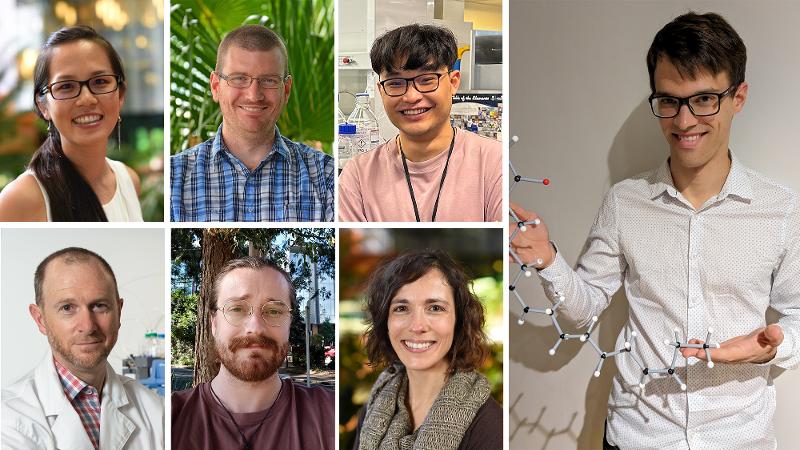First published 6 July 2023
QUT researchers have discovered 103 new unsaturated fatty acids in human derived samples. These findings have doubled the number of these fundamental building blocks of life previously reported in human blood plasma.
In an article in the prestigious journal Nature Communications, QUT researchers and their colleagues in Adelaide and Prague have described their findings and the new analytical technique that enabled the discoveries.
Professor Stephen Blanksby, from the QUT Centre for Materials Science said the human body made its own fatty acids but also took up fatty acids from food that were then modified to make them fit for purpose.
“Lipids play many roles in the body - some form cell membranes, others are precursors for signalling molecules that regulate how the body copes with inflammation and the resolution of inflammation,” Professor Blanksby said.
“This means changes in fatty acids and other lipids (complex fats made from fatty acids) in the body can provide critical clues for health and disease.”
“We know that blood tests report on lipids like cholesterol and triglycerides that are linked to our health status and, with further research, these new molecules could provide critical information about our bodies’ responses to diet or disease.”
Professor Blanksby said QUT researchers developed advanced analytical technology to probe the human lipidome (all lipids in a cell) more deeply than was previously possible.
“The discovery of new lipids and new lipid metabolism using this approach paves the way for more sensitive and selective diagnostic tests,” he said.
Dr Jan Philipp Menzel, a postdoctoral fellow in the QUT School of Chemistry and Physics, said the discoveries were enabled by a combination of liquid chromatography with a mass spectrometer modified to enable a gas-phase reaction with ozone that broke down the carbon-carbon double bonds in unsaturated fatty acids.
Dr Menzel developed custom software to trawl the complex datasets the team obtained to identify the novel lipids.
“It was an innovative approach that allowed us to characterise the structure of unsaturated fatty acids,” Dr Menzel said.
“Using this process we studied human blood plasma, cancer cells, and vernix caseosa, a white layer covering newborns, and found new and different fatty acids in each.
“Some of the newly found fatty acids may not originate from human metabolism but are likely present in blood plasma, for example, after being consumed in food whereas most fatty acids found in vernix caseosa are likely to be a product of human metabolism.
“Our investigation of cancer cell lines included the addition of an enzyme inhibitor to one cell line that helped to assign which fatty acids were formed in increased amounts in laboratory conditions.
“Some of our results show the same trends established in several recent publications and add to the body of evidence that fatty acid metabolism is an important aspect of the metabolism of cancer cells.
“It will take a concerted effort by many scientists around the world to unravel the full biological significance of all the fatty acids that were identified in this study. For example, some new omega-3 fatty acids found in vernix caseosa have unusual patterns of double bonds.
“Fish and seafood, walnuts and flaxseed are well known for essential fatty acids (omega-3 polyunsaturated fatty acids) and their health benefits. However, we currently know very little about the new omega-3 fatty acids we detected on the skin of newborns.”
“The exact structure of a biomolecule determines its biological function, a principle used extensively in biochemistry and biomedical research. Finding biomolecules with new structures (here, differences in the position of double bonds along a fatty acid chain) could be a first step towards studying new metabolic pathways or even develop diagnostic methods or treatments.”
The international research team comprised Dr Jan Philipp Menzel, Dr Reuben Young, Dr Berwyck Poad, Puttandon Wongsomboon (School of Chemistry and Physics), Dr Aurélie Benfield, and Dr Sónia Henriques (School of Biomedical Sciences) (QUT); Julia Scott and Professor Lisa Butler (University of Adelaide); Lukáš Cudlman and Josef Cvaka (Charles University, Prague).
Ozone-enabled fatty acid discovery reveals unexpected diversity in the human lipidome was published in Nature Communications.
Image above, from top left: Dr Aurélie Benfield, Dr Berwyck Poad, Puttandon Wongsomboon, Professor Stephen Blanksby, Dr Reuben Young, Dr Sónia Henriques. Image right: Dr Philipp Menzel.
QUT Media contact:
07 3138 2999 or media@qut.edu.au


